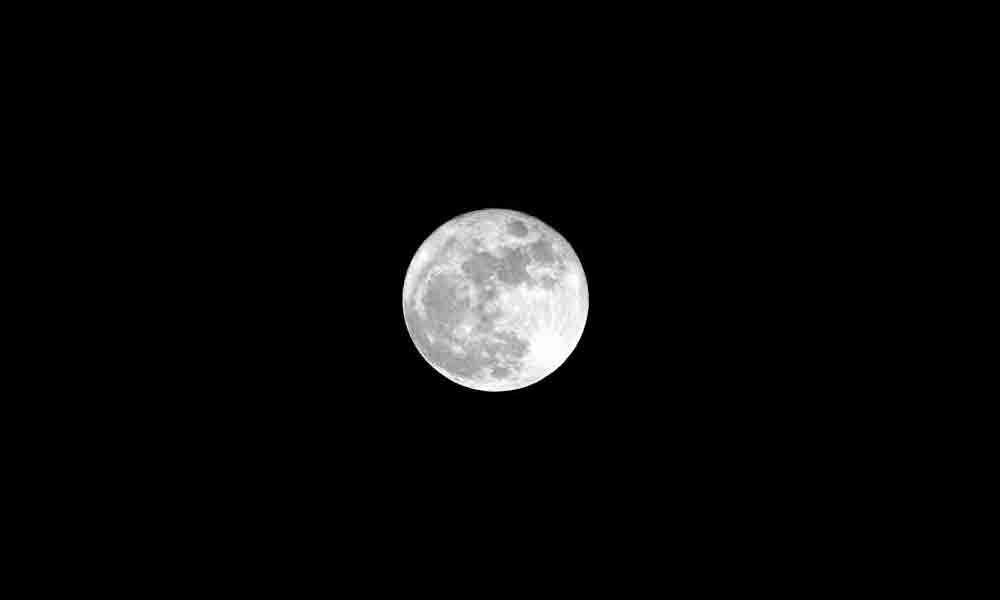Live
- Sunny turns up the heat
- ‘Thandel’ first single ‘Bujji Thalli’ to drop soon
- ‘Thalapathi’ set for grand re-release on Rajinikanth’s 74th birthday
- Shahid Kapoor’s ‘Ashwatthama’ kept on hold due to budget constraints
- ‘Drinker Sai’ teaser: Attracts youth
- Netflix Outage in India and US Ahead of Tyson vs Paul Match
- Police Intensify Investigation into Lagacharla Attack on Officers; Eight More Detained
- Google Docs Introduces AI-Powered Clip Art Generator with Gemini
- LIC sets up stall at India Int’l Trade Fair
- Celebrating journalism and its role in society
Just In

The Moon is shrinking as its interior cools getting over 50 metres skinnier through the last several hundred million years and causing quakes on the lunar surface, a study has found.
The Moon is shrinking as its interior cools getting over 50 metres skinnier through the last several hundred million years and causing quakes on the lunar surface, a study has found.
Just as a grape wrinkles as it shrinks down to a raisin, the Moon gets wrinkles as it shrinks, researchers said. Unlike the flexible skin on a grape, the Moon's surface crust is brittle, so it breaks as the Moon shrinks, forming "thrust faults" where one section of crust is pushed up over a neighbouring part.
"Our analysis gives the first evidence that these faults are still active and likely producing moonquakes today as the Moon continues to gradually cool and shrink," said Thomas Watters, senior scientist at the Smithsonian's National Air and Space Museum in the US. "Some of these quakes can be fairly strong, around five on the Richter scale," Watters said in a statement.
These fault scarps resemble small stair-step shaped cliffs when seen from the lunar surface, typically tens of metres high and extending for several kilometers. The study, published in the journal Nature Geoscience, analysed data from four seismometers placed on the Moon by the Apollo astronauts using an algorithm, or mathematical programme, developed to pinpoint quake locations detected by a sparse seismic network.
The algorithm gave a better estimate of moonquake locations. Seismometers are instruments that measure the shaking produced by quakes, recording the arrival time and strength of various quake waves to get a location estimate, called an epicenter. Astronauts placed the instruments on the lunar surface during the Apollo 11, 12, 14, 15, and 16 missions.
The Apollo 11 seismometer operated only for three weeks, but the four remaining recorded 28 shallow moonquakes -- the type expected to be produced by these faults from 1969 to 1977. The quakes ranged from about two to five on the Richter scale. Using the revised location estimates from the new algorithm, the team found that eight of the 28 shallow quakes were within 30 kilometers of faults visible in lunar images. This is close enough to tentatively attribute the quakes to the faults, since modelling by the team shows that this is the distance over which strong shaking is expected to occur, given the size of these fault scarps.
Other evidence that these faults are active comes from highly detailed images of the Moon by NASA's Lunar Reconnaissance Orbiter (LRO) spacecraft. The Lunar Reconnaissance Orbiter Camera (LROC) has imaged over 3,500 of the fault scarps.

© 2024 Hyderabad Media House Limited/The Hans India. All rights reserved. Powered by hocalwire.com







